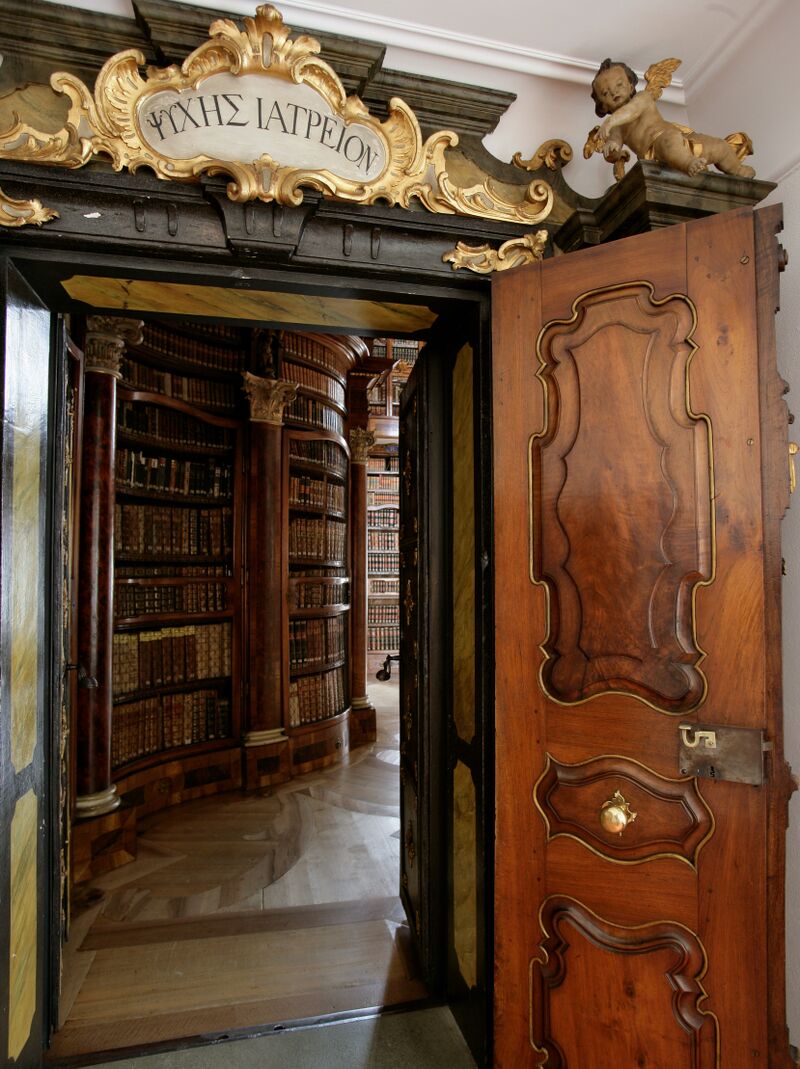History

The baroque portal of the Abbey Library made in 1781 by Franz Anton Dirr with its Greek inscription PSYCHES IATREION («healing-place of the soul»).
The roots of St.Gallen Abbey Library reach back to the Middle Ages, when it served the monastery that grew up on the site where St Gall founded a community of hermits in 612.
Books had already played an important role in the life of Gall, the Irish missionary and educated hermit who founded the community in 612. The scriptorium, which can be traced by records back to the mid-8th century, actively enlarged the collection with items produced by monks in the convent. The close links between the scriptorium and the library are reflected in the Abbey Plan of St Gall made around 820. In subsequent years, the manuscripts here formed the basis for the accomplishments of extraordinary artists and scholars – from Notker Balbulus, who was also a librarian, to Ekkehart IV, probably its most prolific user. From the 10th to the 16th century, tucked safely away in the Hartmut Tower, it defied many threats and several fires that raged through the abbey and the town. Fortunately, it also survived the turbulent Reformation period.
In 1553 a building was constructed especially for the library in the west wing of the abbey, and this was replaced in 1767 by the present structure with the Baroque Hall. This is regarded as one of the most beautiful library interiors in the world. Thanks to the foresight of the librarians, the holdings survived unscathed when, between 1797 and 1805, the abbey lands were secularised and the abbey itself dissolved.
Since that time, the library has belonged to the Catholic Denomination Within the Canton of St.Gallen, which continues to operate and develop it as a research institution of international standing. At the heart of the St.Gallen World Cultural Heritage complex, it is now the foremost historical sight in Eastern Switzerland.